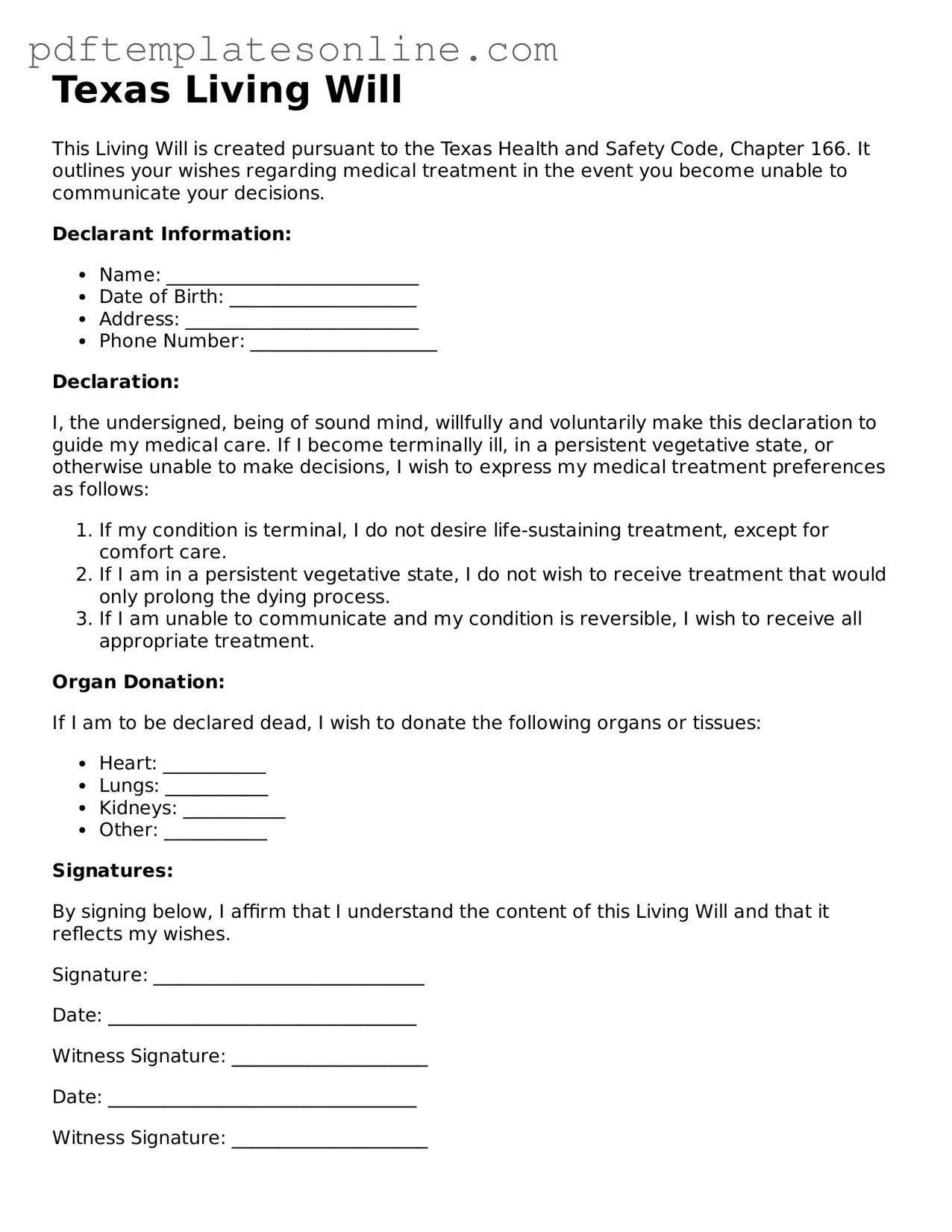Filling out a Texas Living Will form is an important step in planning for future medical care. However, many individuals make common mistakes that can lead to confusion or even invalidate their wishes. One frequent error is failing to sign and date the document. Without a signature, the form cannot be considered legally binding, and healthcare providers may not honor the directives outlined within.
Another mistake involves not properly identifying the individuals who will act as healthcare proxies. It’s crucial to select trusted individuals who understand your wishes and are willing to take on this responsibility. Leaving this section blank or choosing someone who may not be available can create complications during critical moments.
Many people also overlook the importance of specifying their treatment preferences clearly. Vague language can lead to misunderstandings about the types of medical interventions you want or do not want. It is essential to articulate your desires explicitly to avoid confusion among family members and medical staff.
Some individuals neglect to discuss their Living Will with family members. Open conversations about your wishes can help ensure that your loved ones understand and respect your decisions. Without this dialogue, family members may struggle to make choices that align with your intentions.
Another common error is failing to update the Living Will as circumstances change. Life events such as marriage, divorce, or the diagnosis of a serious illness can impact your preferences. Regularly reviewing and updating the document is vital to ensure it reflects your current wishes.
Many people also forget to keep the Living Will in an accessible location. Storing it in a safe deposit box may protect it, but it can also prevent quick access when needed. Instead, consider keeping copies in easily reachable places and sharing them with your healthcare providers.
Some individuals mistakenly believe that a Living Will is the same as a Do Not Resuscitate (DNR) order. While both documents relate to medical care preferences, they serve different purposes. A Living Will outlines your wishes regarding life-sustaining treatments, while a DNR specifically addresses resuscitation efforts. Understanding these distinctions is crucial.
Additionally, people sometimes forget to have witnesses sign the Living Will. Texas law requires that the document be signed in the presence of two witnesses or a notary. Failing to meet this requirement can render the document invalid, so it’s essential to follow the legal guidelines closely.
Finally, some individuals may not realize the importance of reviewing the Living Will with an attorney or a legal expert. While it is possible to fill out the form independently, professional guidance can help ensure that your document meets all legal requirements and accurately reflects your wishes.
